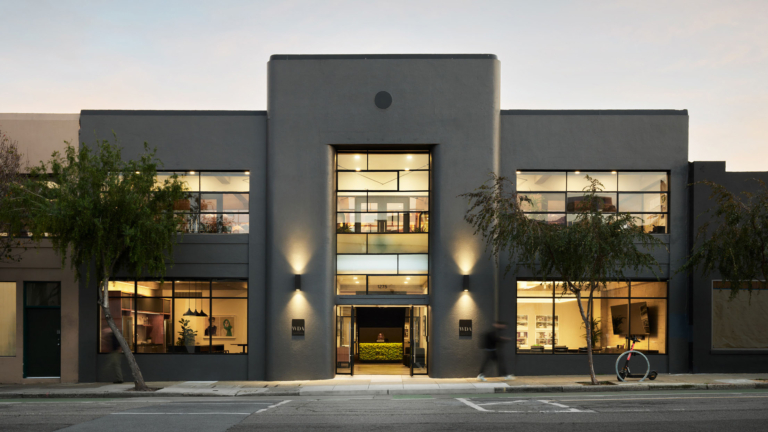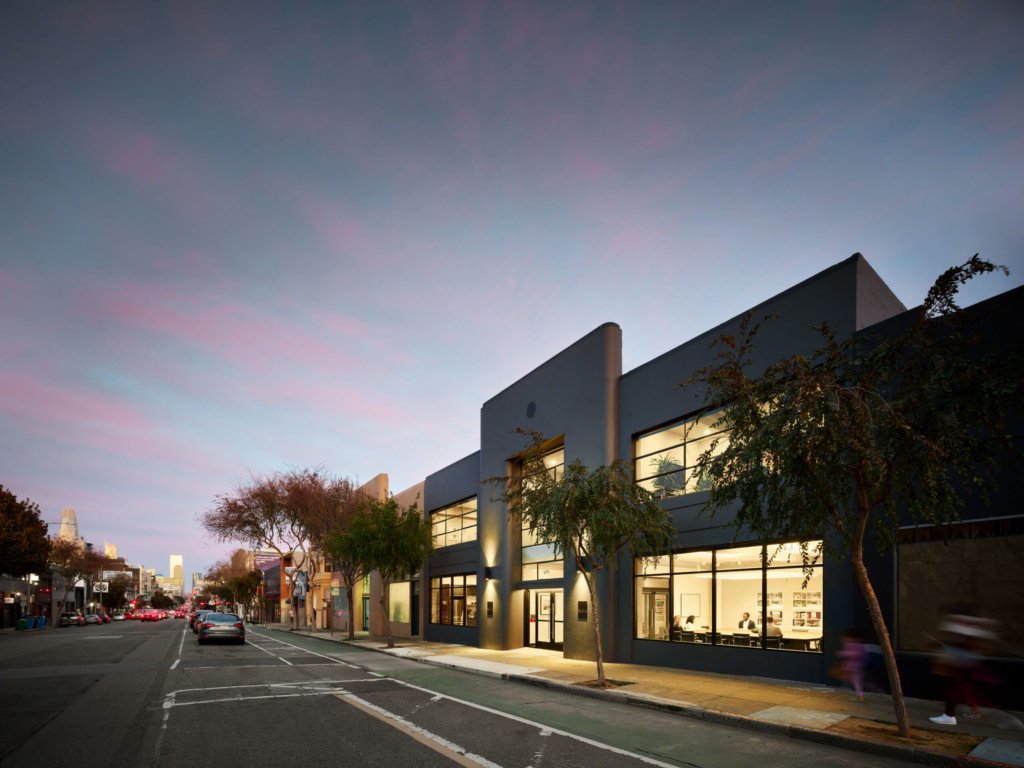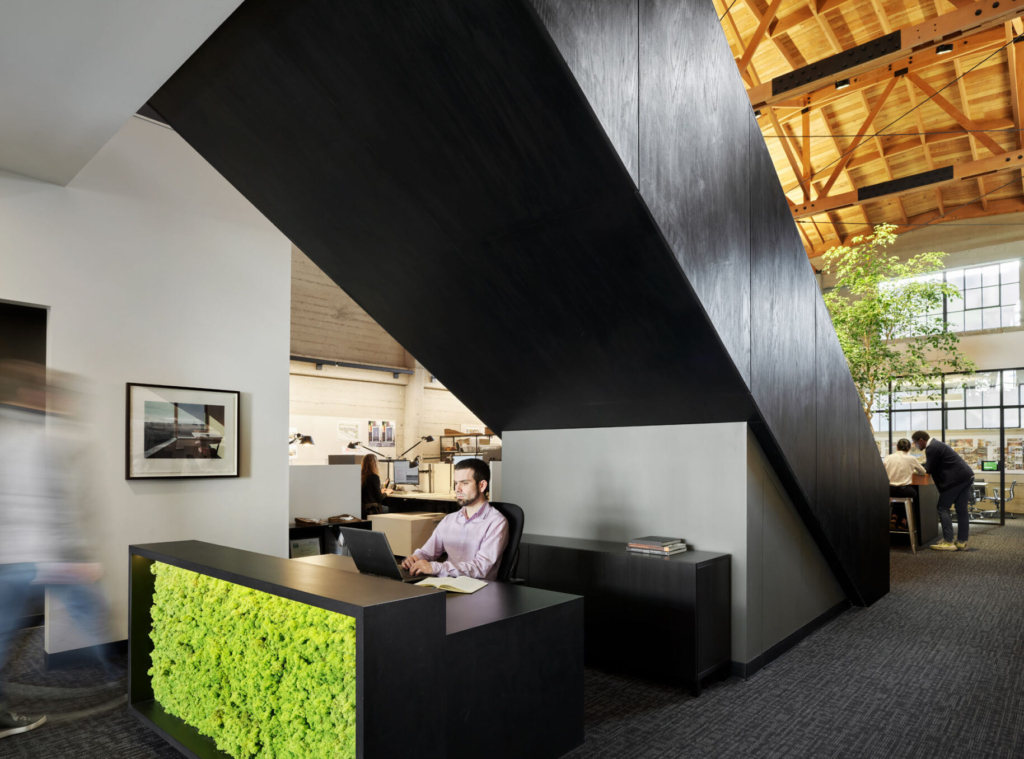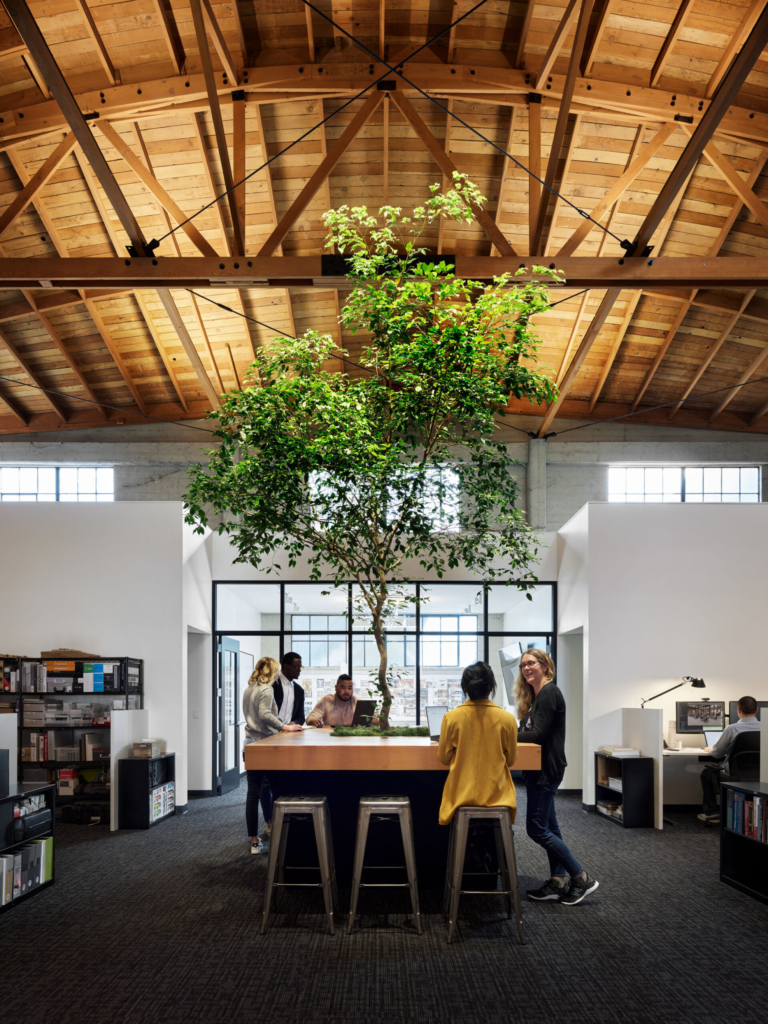By Steven Lovell
Contributors: William Duff, Sarah Mergy, Wendy Osaki, Frank Steier

The bowstring truss of the main studio space is beautiful and is something not seen that often anymore.
It is an architect’s dream to design their own office. We had the privilege of realizing that dream and living our sustainable values through the adaptive reuse of our new space at 1275 Folsom Street. As one of the leading architecture firms with adaptive reuse expertise, we embraced the challenge of transforming this historic structure while preserving its character. Here, we share the building’s history, key features, and our design philosophy, demonstrating its evolution into the vibrant workspace it is today.
Set in the SOMA (South of Market) neighborhood along the developing Folsom Street corridor, this location gives our staff critical access to convenient public transit. The City has planned for Folsom Street to develop into a major connection between the Van Ness corridor, the downtown business district, and the Embarcadero waterfront.
We made a deliberate commitment to working and staying in San Francisco. Transitioning from tenant to building owner gives the firm stability in the city’s volatile real estate market. “By being a building owner, I’m even further invested in the city,” says founder William Duff (who goes by Duffer). We are excited to contribute to this urban development.

Sanborn maps show that the original building at 1275 Folsom was constructed in the late 1800s but likely burned in the fire following the 1906 earthquake. During excavation, we uncovered building fragments and charred wood, evidence of these events. Rebuilt as an industrial building in 1910, it housed various businesses over the years, including ornamental iron shops, ice machinery, Watermark Press, and most recently, Metro Floors, a commercial carpet and tile store.
A primary goal of our renovation plan was to conserve the building’s original structure while adapting it into a modern workplace. We wanted to highlight its former use as a tall, open warehouse through a “simple architectural plan that brings the inside back to life…to highlight and display its original spatial qualities and features,” says Duffer.
To achieve this, we stripped away previous refurbishments, exposing the building’s original structure. Sandblasting layers of finish revealed the warm wood tones of the columns, ceiling, and trusses. While the board-formed concrete walls regained their raw, historic character. We selected minimal additional materials to enhance warmth while keeping the focus on the building’s honest expression of material and structure. A palette of black, white, and accented grays provides a modern, neutral backdrop, harmonizing with the historic finishes of wood and concrete.
The new layout reflects this simple and restrained design vision. Removing a ground-floor side door restored the façade’s original symmetrical form.
Upon entering, visitors step into a large central reception hall, flanked by the main conference space and office café. We designed a space that fosters “serendipitous exchange,” where staff and clients can engage in casual conversations. As you move from the reception hall into the daylight-filled, two-story workspace, the open barrel-trussed ceilings create an inspiring “big reveal.” “The bowstring truss of the main studio space is beautiful and is something not seen that often anymore,” says Duffer. A formal staircase on axis with the lobby connects to the mezzanine above, overlooking Folsom Street. Upstairs, a wall of windows provides transparency and allows balanced daylight to permeate the entire space.

Sustainability is a key facet of our firm’s design philosophy and a foundational principle of our renovation plan. The building already contained embodied carbon, so we made use of its existing materials while aligning with our design vision. We selected new materials sparingly, prioritizing those with sustainable and durable content.
For architecture firms with adaptive reuse expertise, sustainability extends beyond material choices—it involves preserving a building’s inherent value while enhancing its long-term performance. We salvaged and repurposed existing boards removed during demolition for new casework. Energy-efficient cooling and heating equipment, improved insulation, and enhanced seals at walls and openings all contribute to a more environmentally friendly building.

We also designed the space to support the Well Building Standard™, prioritizing occupant health and comfort. A large Ficus tree anchors the open office, fostering a natural connection within the studio. A roll-up door opens to a new deck in the back, seamlessly blending indoor and outdoor space. When asked what he appreciates most, Duffer says, “It’s a space that provides a greater sense of collaboration and unity.”
This new office functions as one of our best tools for delivering excellent client service. COVID-19 rapidly changed how we work, and we designed our space with these shifts in mind. The office accommodates a modern hybrid workstyle, offering multiple rooms optimized for remote meetings. A lower occupancy density, expanded space, and a state-of-the-art MERV 7-rated mechanical system ensure a safe and comfortable work environment.
For us, 1275 Folsom represents our firm’s ongoing adaptability—not just in business operations but also in design. As one of San Francisco’s architecture firms with adaptive reuse expertise, we take pride in creating spaces that honor their past while supporting the needs of the future.
Contributors: William Duff, Sarah Mergy, Wendy Osaki, Frank Steier